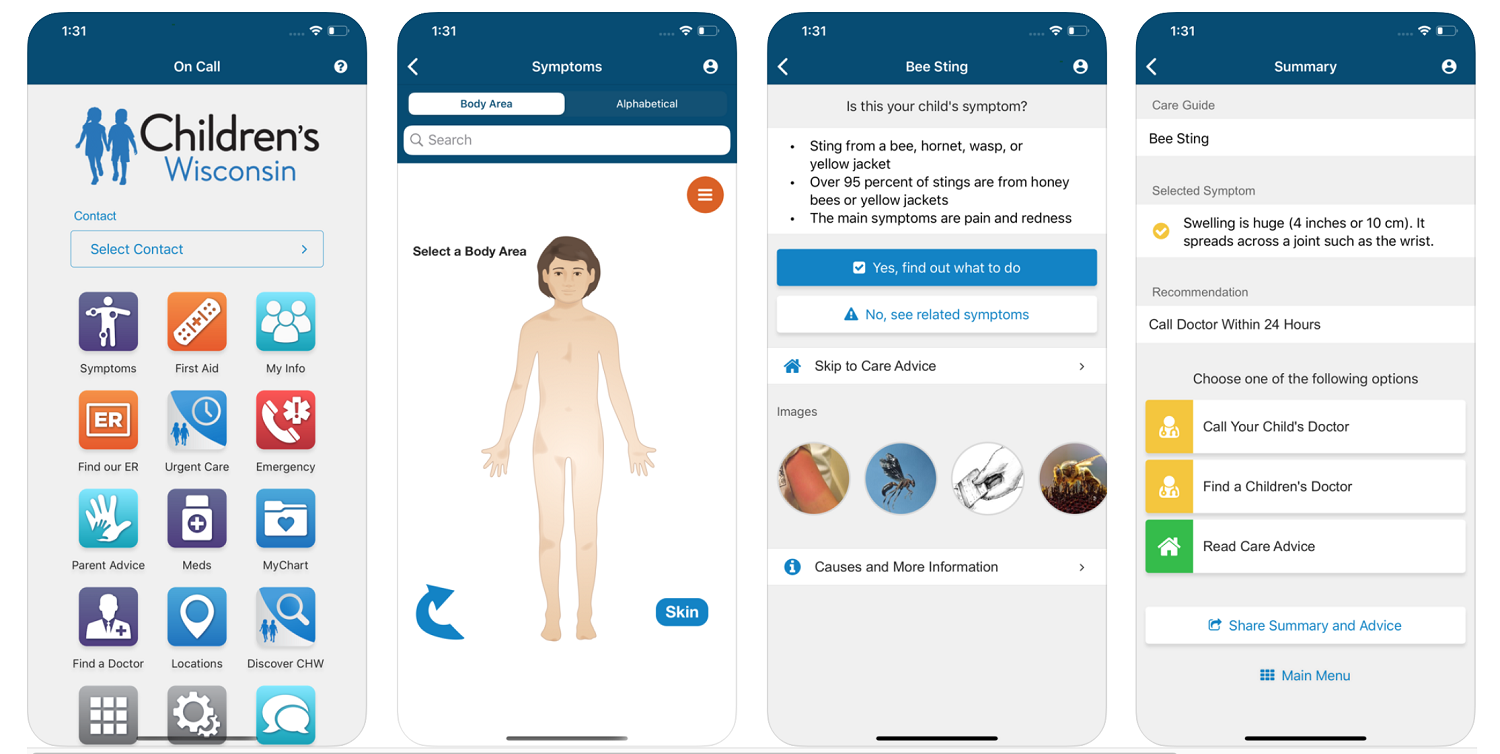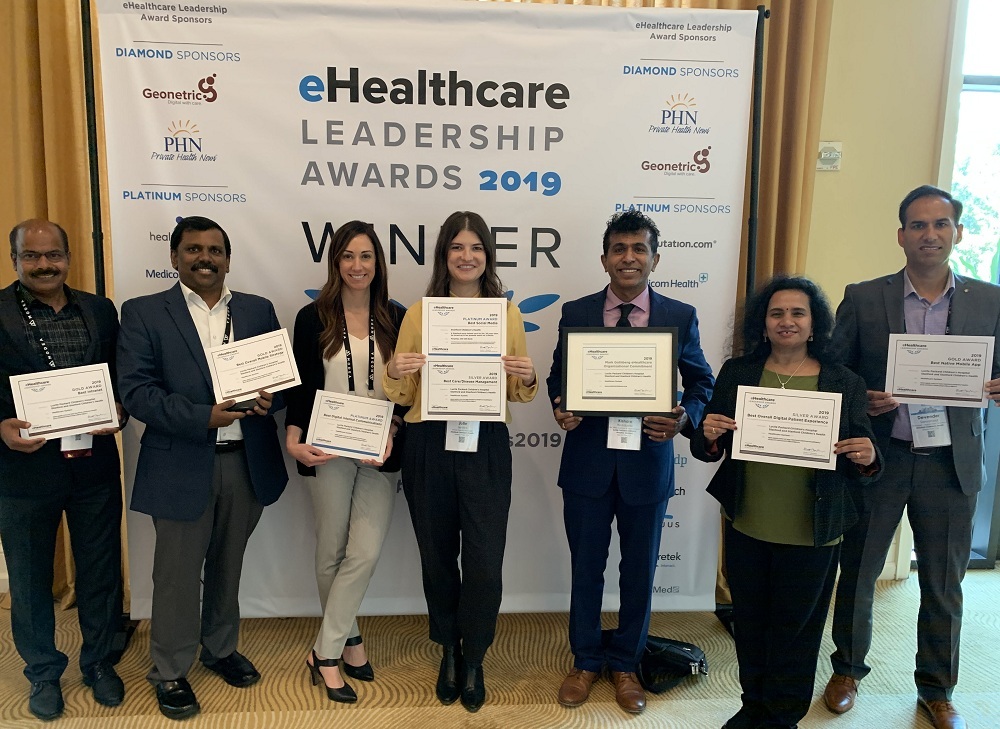The 2019 eHealthcare Leadership Awards: Digital Progress That Helped Healthcare Organizations Cope With a Crisis in 2020
// By Jane Weber Brubaker //
 Looking back at the winners from the 2019 eHealthcare Leadership Awards, we can see how leading organizations moved the industry forward in ways that they couldn’t have anticipated would be so necessary as the COVID-19 pandemic surged. Could they have known, for example, that virtual visits would become an essential service as health systems sought to triage patients potentially infected with the coronavirus and slow its spread within their communities?
Looking back at the winners from the 2019 eHealthcare Leadership Awards, we can see how leading organizations moved the industry forward in ways that they couldn’t have anticipated would be so necessary as the COVID-19 pandemic surged. Could they have known, for example, that virtual visits would become an essential service as health systems sought to triage patients potentially infected with the coronavirus and slow its spread within their communities?
In healthcare, award-winning marketing means more than a certificate or a badge to display on your wall or website. When we do our best work and use our marketing savvy, our goals are about helping people have a better quality of life, or ultimately, about saving their life — sometimes, against great odds.
Three health systems received top honors in 2019, receiving the coveted Mark Gothberg eHealthcare Organizational Commitment Award. This “best in show” award recognizes organizations based on their overall digital accomplishments, strategies, and roadmap. Each organization submitted a document detailing staffing against efforts, financial commitment, and results. They also demonstrated their leadership by winning awards in several individual categories.
These organizations are characterized by a digital-first mindset that drives and powers their marketing and communications strategies. The foundation they built leading into 2020 helped them adapt and respond in the fast-moving crisis that began to unfold earlier this year.
The three organizations are:
- Children’s Hospital of Wisconsin
- Lucile Packard Children’s Hospital and Stanford Children’s Health
- Jefferson Health/DICE Group
Children’s Wisconsin
The digital health and experience team (DHX) at Children’s Hospital of Wisconsin (now known as Children’s Wisconsin) strives to “think digital in everything we do.”
In addition to the eHealthcare Organizational Commitment Award, Children’s Wisconsin won three other awards in 2019:
- Best Internet Home Page
- Best Overall Mobile Strategy
- Best Online Appointment Scheduling
The organization reported that 13 percent of all appointments are scheduled online, and online payments total $1 million a month.
The digital health and experience team is guided by these principles:
- Design around the consumer experience – not workflows
- Prioritize scale and strategy – not pilots
- Leverage organizational momentum
- Optimize existing technology
- Lead with a digital mindset
- Identify partners
- Assume mobile – not desktop
The centerpiece of Children’s Wisconsin’s mobile strategy is its Children’s “On Call” mobile app. One Awards judge remarked that it “may have the most complete, end-to-end consumer mobile strategy and execution of any hospital in the country.”

The On Call app features a symptom checker, tips to help a child feel better, dosage for over-the-counter medications, and one-click calling to the doctor, pharmacy, or 911, as well as expert guidance.
Here’s a video describing the app’s features.
Another mobile app launched last year, Children’s from Home, offers virtual urgent-care visits. This capability has helped the hospital navigate during the coronavirus pandemic. A special message on the hospital’s website states: “If your child has COVID-19 symptoms… you can seek guidance from a pediatric provider 24/7 through Children’s Online Urgent Care.”
Lucile Packard Children’s Hospital Stanford and Stanford Children’s Health
Stanford Children’s Health took home seven eHealthcare Leadership Awards in 2019:
- Best Care Disease Management
- Best Intranet
- Best Digital Internal Communications
- Best Overall Digital Patient Experience
- Best Native Mobile App
- Best Overall Mobile Strategy
- Best Social Media

Stanford Children’s Health is committed to creating and implementing digital tools that enhance patient experience at every touchpoint. The organization is on a digital transformation journey that seeks to:
- Flip the mode of healthcare delivery — take healthcare to children, families, and expectant mothers
- Drastically improve access — create a robust virtual-visit system to provide the right expert for the right child in the right community
- Standardize high-quality inpatient and emergency care — provide accessible, quality, unified experience via digital connectivity
- Provide continuous care — maintain a continuous connection with children and families via technology to promote health seamlessly throughout their daily lives
- Disrupt healthcare — develop digital health solutions that will improve the health of patients and families, and that can be leveraged around the world
In its entry for the eHealthcare Organizational Commitment Award, Stanford Health noted that as of January 2019, the number of video visits completed was 885 — total. Then in 2020, COVID-19 hit. The organization reported in late March that “the all-time daily tele-visit high for Stanford Children’s Health before COVID-19 hit California was 35; recently, clinicians conducted 500 in one day.”
Thomas Jefferson University Hospital and Jefferson Health
The DICE (Digital Innovation and Consumer Experience) Group is the digital innovation arm of Jefferson Health, tasked with creating innovative products, services, and business models for Jefferson as well as other healthcare organizations.
In 2019, Jefferson won awards in four categories:
- Best Doctor Directory
- Best Mobile Website
- Best Healthcare Content
- Best Internet Home Page
The Group’s team of 150 innovators executes 130 projects a year, transforming many operational areas. Having this much depth and momentum enabled the DICE Group to hit the ground running when new technology solutions were needed to address the coronavirus epidemic.
In May, Becker’s Laura Dyrda interviewed Neil Gomes, founder of the DICE Group. “In the past month, much of their foundational work has been critical to the health system’s response to COVID-19,” writes Dyrda.
In six weeks, the DICE Group developed and launched 50 COVID-19-related projects, according to the interview. Here are some examples:
- Expanding virtual work capabilities
- Enabling virtual communication within the hospital for patients in isolation
- Triaging patients calling in with concerns about their symptoms
- Determining when employees who were exposed to the coronavirus could return to work
- Preparing for increased telehealth
Awards and recognition play a role in driving progress and innovation in healthcare. By shining the spotlight on excellence, our goal is to motivate the industry to keep pressing forward. During the coronavirus pandemic, healthcare has proven its leadership, adaptability, and commitment to providing the best possible care, even under conditions that have been at times unsafe and overwhelming. We salute the many innovators who helped to make things better during these unprecedented times.
Visit the eHealthcare Leadership Awards website for more information, or to enter.
Jane Weber Brubaker is executive editor of Plain-English Health Care, a division of Plain-English Media. She directs editorial content for eHealthcare Strategy & Trends and Strategic Health Care Marketing, and is past chair of the eHealthcare Leadership Awards. Email her at jane@plainenglishmedia.com.

